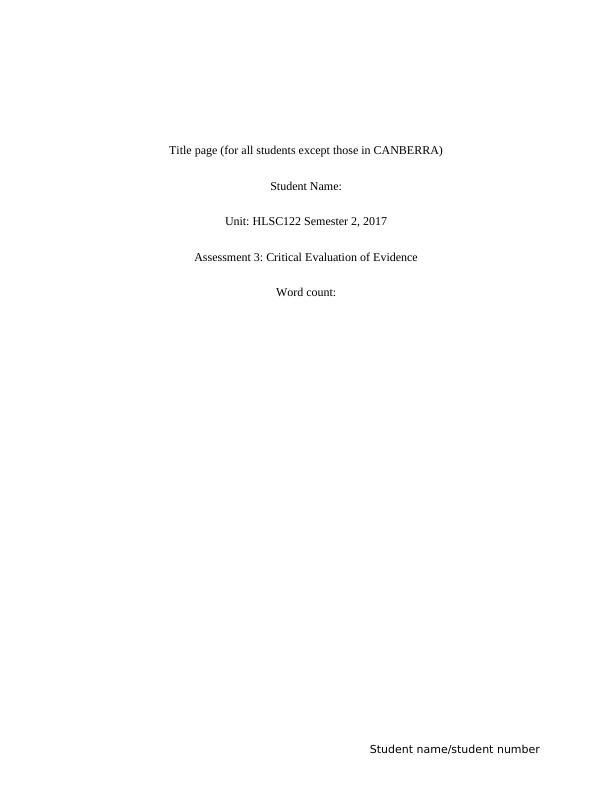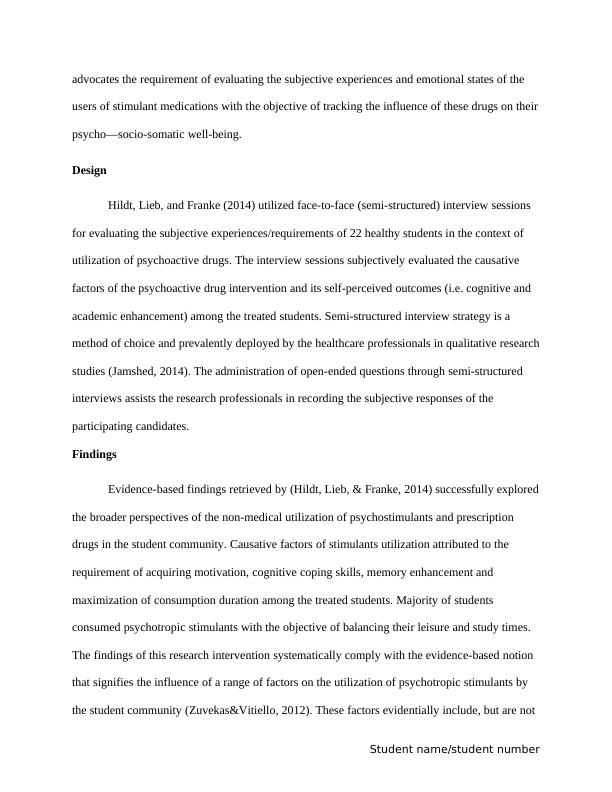Critical Evaluation of Evidence Word count: Unit: HLSC122 Semester 2, 2017 Assessment 3: Critical Evaluation of Evidence Word count: Introduction
Added on 2019-10-31
About This Document
This report will be made on the basis of two research studies that will include the assessment of the possible non-prescription stimulants in terms of increasing the academic performance of university students. This will contain two parts and every part will contain different research. Both types of research will be based on authors that have completed research on relevant topics. The main purpose of this resource is to get knowledge about any rational basis for their conflict of interest in relation to the undertaking of their respective studies and associated evidence-based findings. It will also help in getting knowledge about credibility that should be offered by the researcher if they are using any research that has been conducted in past.
Critical Evaluation of Evidence Word count: Unit: HLSC122 Semester 2, 2017 Assessment 3: Critical Evaluation of Evidence Word count: Introduction
Added on 2019-10-31
End of preview
Want to access all the pages? Upload your documents or become a member.




